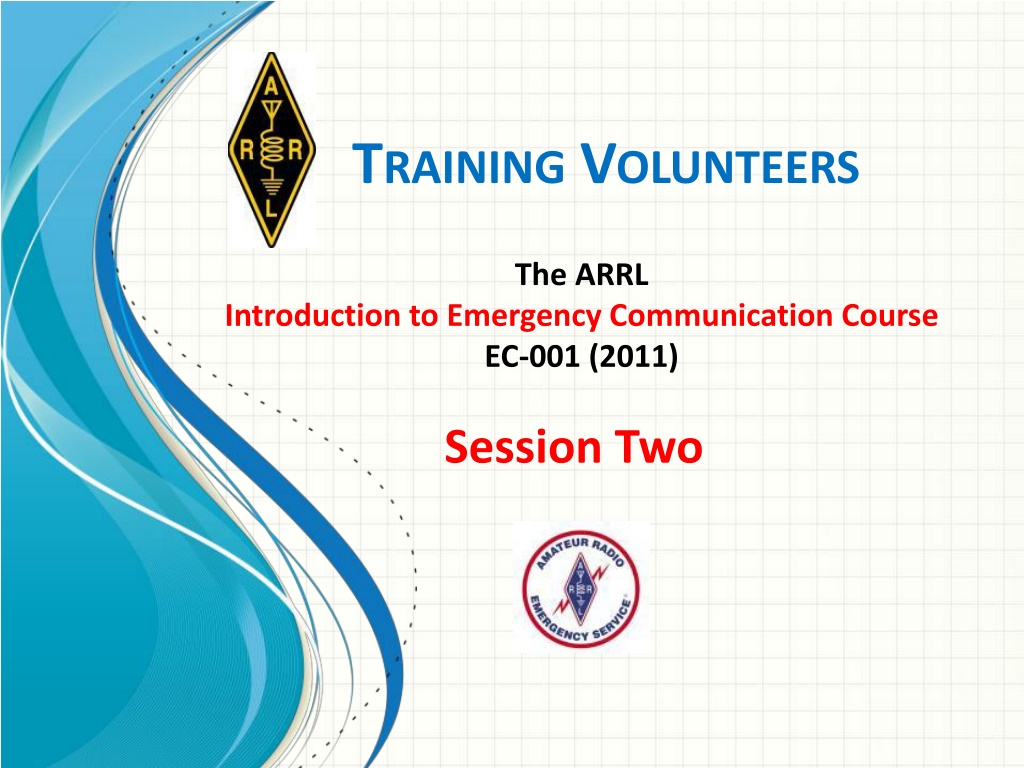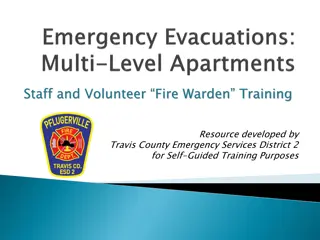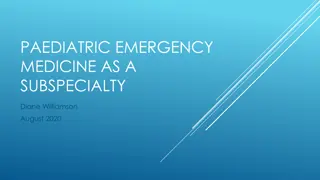Emergency Communication Volunteer Training Overview
Introduction to Emergency Communication course covers a wide range of topics including net operations, net types, example net formats, net missions, and more. Participants will learn about the importance of structured communication networks during emergencies and disaster situations. The training emphasizes the role of volunteers in supporting emergency response efforts and provides valuable insights into effective communication strategies. Key concepts such as different net types, missions, and formats are explored to enhance participants' understanding of emergency communication protocols.
Download Presentation

Please find below an Image/Link to download the presentation.
The content on the website is provided AS IS for your information and personal use only. It may not be sold, licensed, or shared on other websites without obtaining consent from the author. Download presentation by click this link. If you encounter any issues during the download, it is possible that the publisher has removed the file from their server.
E N D
Presentation Transcript
TRAINING VOLUNTEERS The ARRL Introduction to Emergency Communication Course EC-001 (2011) Session Two
Reminder Complete two DHS/FEMA Courses IS-100.b Introduction to ICS IS-700 National Incident Management System Http://training.fema.gov/IS/NIMS.asp
Session Two Topic Session 1 Topics 1, 2, 3, 4, 5a, 5b Session 2 Topics 6, 7a, 7b, 7c, 7d, 8, 9, 10 Session 3 Topics 11, 12, 13, 14, 15 Session 4 Topics 16, 17, 18, 19, 20 Session 5 Topics 21, 22, 23, 24, 25, 26, 27 Session 6 Topics 28, 29, Summary, Final Exam
Nets Defined Why do we have Nets? Group setting in multiple locations Bring orderliness to chaos Net Operations Net Manager NCS First operator on scene
Net Types Open Informal no NCS Few stations Directed NCS Check-ins Tactical call signs
Example Net Formats Informal nets Interest Group Nets Swap Nets Training Nets Formal Nets Traffic Nets Emergency Nets Started after a request for service has been submitted by a served agency through an appointed, local amateur radio Emergency Coordinator
Net Missions Traffic Net Resource Net Tactical Net Information Net Health and Welfare (H&W) Nets
Summary Any questions before the quiz?
Topic 7a Question 1. Which of the following requires no NCS to control net operations? A. An open Net B. A directed Net C. An NTS Net D. A Health and Welfare Net
Topic 7a Question 2. Which of the following is true of Directed Nets? A. There is minimal direction from the Net Control Station B. There is no clearly assigned mission C. They serve only as Liaison Nets between several simultaneous nets during large operations D. They are used when the volume of traffic is too great to be handled on a first-come, first-served basis
Topic 7a Question 3. Who is responsible for ensuring a smooth flow of traffic within and between nets? A. The Official Observer B. The Net Manager C. The Liaison Station D. The NTS Emergency Coordinator
Topic 7a Question 4. Which type of net would handle non-formal communications for a served agency? A. Health and Welfare Net B. Tactical Net C. Resource Net D. Traffic Net
Topic 7a Question 5. Which of the following statements concerning nets is true? A. Resource Nets are used to assign operators as they become available B. Health and Welfare Nets operate only on HF bands C. NTS Traffic Nets handle both formal and informal long distance messages D. Tactical Nets handle only formatted, written messages
ANY QUESTIONS BEFORE STARTING TOPIC 7B?























